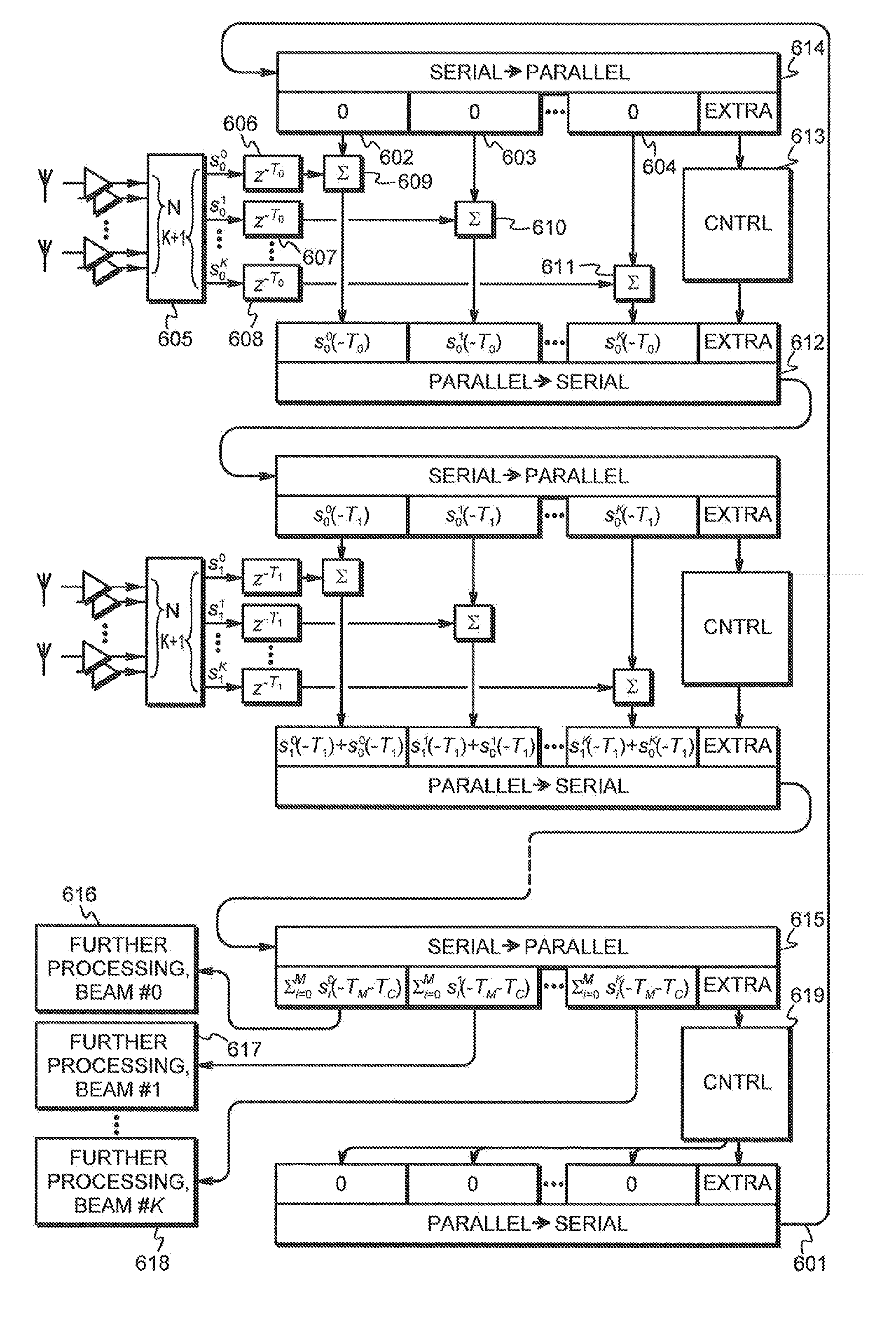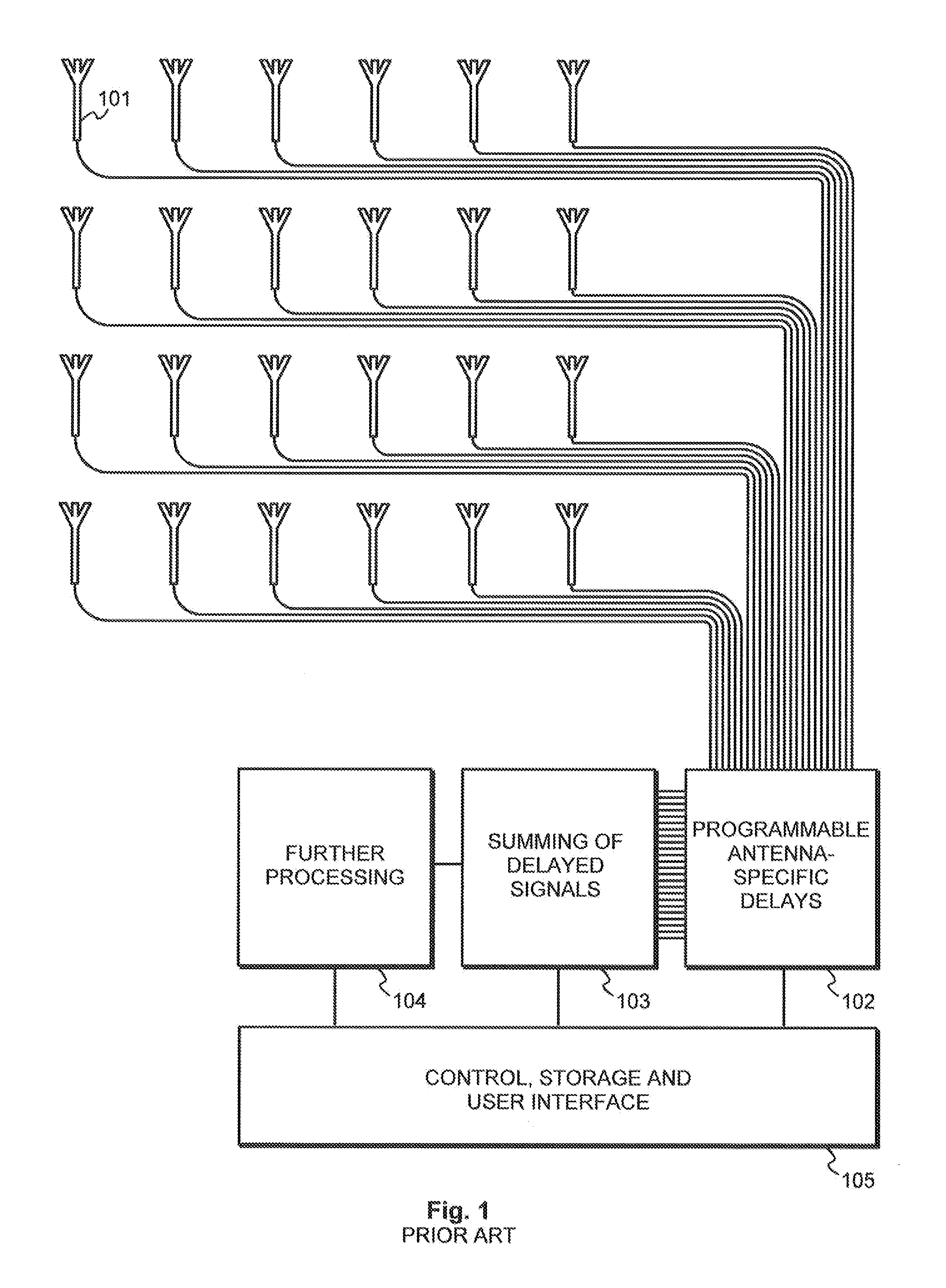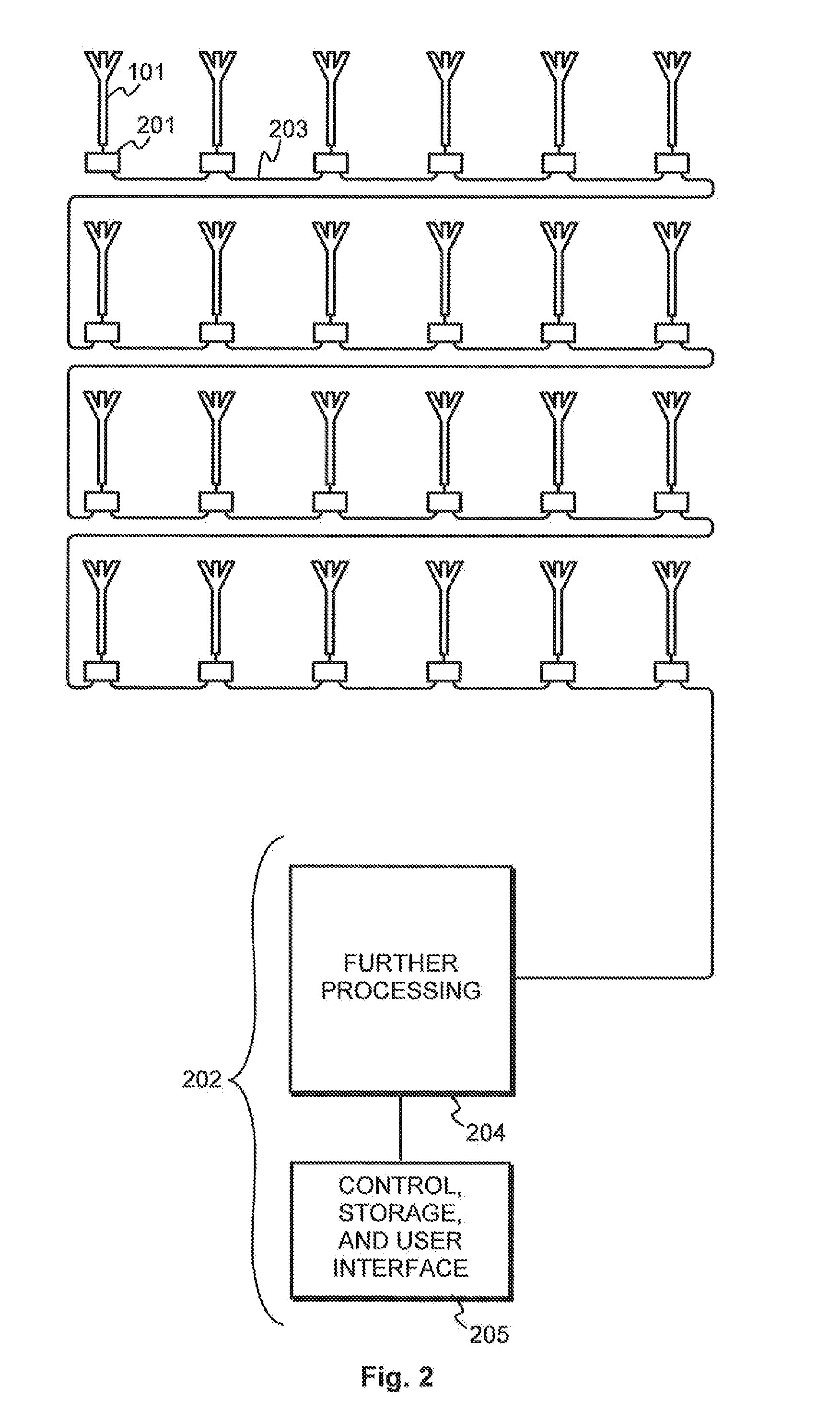Method and Arrangement for Operating a Phased Antenna Array
- Summary
- Abstract
- Description
- Claims
- Application Information
AI Technical Summary
Benefits of technology
Problems solved by technology
Method used
Image
Examples
Embodiment Construction
[0042]FIG. 2 illustrates an antenna arrangement, which comprises a multitude of antennas for use as an antenna array. As such the antennas may be similar to any previously known antennas, for which reason the same reference number 101 is used for an exemplary antenna as in the description of prior art. In order to be used as an antenna array they are typically distributed over a relatively large area. The signal that is received by the antennas is called a measurement signal.
[0043]The antenna arrangement comprises a multitude of functional blocks which are designated as antenna units in this description. In this description we use the designation “antenna unit” to refer to a functional block, which does not (necessarily) include the antenna proper but which includes electronic components arranged to process signals received through the antenna(s) and to communicate with other antenna units. Antenna unit 201 is shown as an example. Each antenna unit is coupled to receive a measuremen...
PUM
 Login to View More
Login to View More Abstract
Description
Claims
Application Information
 Login to View More
Login to View More - R&D
- Intellectual Property
- Life Sciences
- Materials
- Tech Scout
- Unparalleled Data Quality
- Higher Quality Content
- 60% Fewer Hallucinations
Browse by: Latest US Patents, China's latest patents, Technical Efficacy Thesaurus, Application Domain, Technology Topic, Popular Technical Reports.
© 2025 PatSnap. All rights reserved.Legal|Privacy policy|Modern Slavery Act Transparency Statement|Sitemap|About US| Contact US: help@patsnap.com



